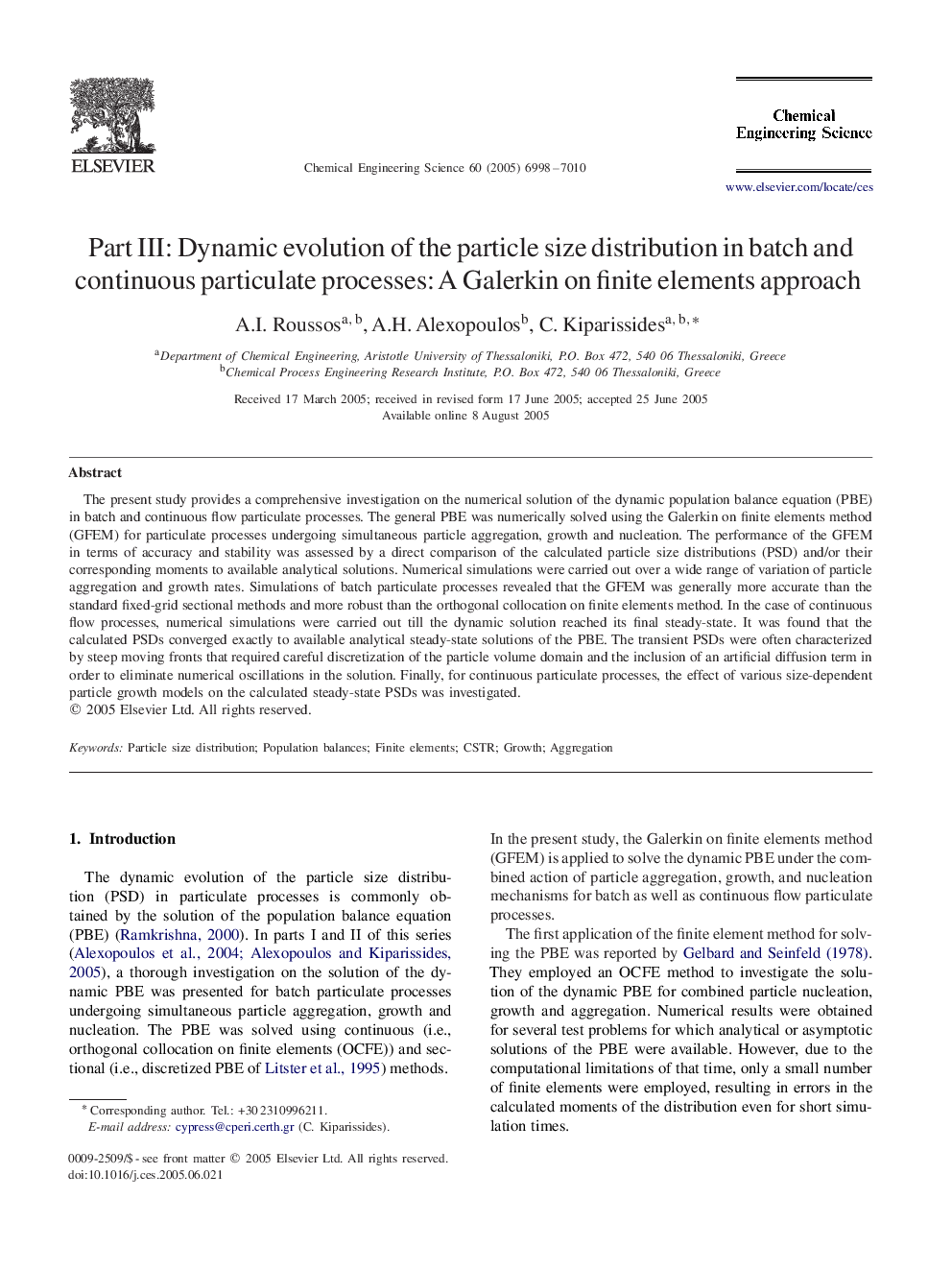| Article ID | Journal | Published Year | Pages | File Type |
|---|---|---|---|---|
| 160159 | Chemical Engineering Science | 2005 | 13 Pages |
The present study provides a comprehensive investigation on the numerical solution of the dynamic population balance equation (PBE) in batch and continuous flow particulate processes. The general PBE was numerically solved using the Galerkin on finite elements method (GFEM) for particulate processes undergoing simultaneous particle aggregation, growth and nucleation. The performance of the GFEM in terms of accuracy and stability was assessed by a direct comparison of the calculated particle size distributions (PSD) and/or their corresponding moments to available analytical solutions. Numerical simulations were carried out over a wide range of variation of particle aggregation and growth rates. Simulations of batch particulate processes revealed that the GFEM was generally more accurate than the standard fixed-grid sectional methods and more robust than the orthogonal collocation on finite elements method. In the case of continuous flow processes, numerical simulations were carried out till the dynamic solution reached its final steady-state. It was found that the calculated PSDs converged exactly to available analytical steady-state solutions of the PBE. The transient PSDs were often characterized by steep moving fronts that required careful discretization of the particle volume domain and the inclusion of an artificial diffusion term in order to eliminate numerical oscillations in the solution. Finally, for continuous particulate processes, the effect of various size-dependent particle growth models on the calculated steady-state PSDs was investigated.
